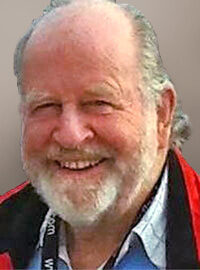
Part 75
Moving one’s home has often been described as one of the most stressful activities in life. Moving a home in one’s eighties takes this particular drama to a whole new level!
We arrived in the UK from South Africa seven years ago to live in the lush, green-forested county of Sussex, England. The 7,000 acres of Ashdown Forest nearby, originally famed for deer hunting, has 100 miles of walking paths. It is also the home of the famous “Winnie the Pooh” stories by A.A. Milne, which actually has a “Pooh Corner” as featured in his books. All in all, it was a good move except for the tiny apartment we took as a temporary measure and somehow never managed to dredge up the energy to find somewhere more spacious.
Due to gentle family pressure from our daughter Xanthe and son Jason, we were persuaded to move closer to them, now that they have both relocated from South Africa, but they were still living just too far away for comfortable visits to us, or us to them. As a result, we seldom saw each other and our kids (in their fifties) being good family-oriented characters, felt that it was high time for us to move nearer. They both have very high-powered jobs and it would not be practical or desirable for them to move closer to us.
The major carrot was the fact that Xanthe, with the help from a friend, found a perfect apartment for us, only seven minutes from her home and forty minutes from Jason’s.
It is quite incredible how much one can accumulate in a tiny apartment in seven years. It was frankly way beyond the capacity of the apartment to comfortably handle the load. We spent our lives stepping over things and in our tiny kitchen it was simply too small for both of us to work in there at the same time.
Suddenly we were offered the opportunity of a spacious two-bedroom apartment – or flat as the English call it – with a sizable kitchen and all kinds of fun activities in the retirement village where it is situated.
This has finally forced me to look up the reason for calling an apartment a flat. Here’s the Google explanation:
“Flat as a dwelling is derived from a Scottish word “flet” meaning a floor or a storey of a house or building. It also has a secondary derivation because the rooms of an apartment are usually all on the same level, so an apartment is flat.” The Brits may have invented the English language, but they certainly do some strange things with it!
So, we’ve made the move, and many thanks to Xanthe, Jason, his wife Sherri and their eldest son Andy. We did most of the fiddly work of wrapping up things like glasses in soft paper and bubble wrap but the rest of the family moved in like a swarm of locusts and did most of the heavy lifting.
Jason went beyond the limits of normal helpfulness, in between his demanding job as an outside broadcast Production Manager for Sky TV. He came back from organizing the logistics of filming a Rugby League match in the North of England, brought Sherri to help on the Sunday, drove her a couple of hours back home to High Wycombe, returning that night, so that the following morning he could supervise the loading of our possessions onto a small removal truck. This enabled us to leave early and arrive at our new apartment before the removers. We could then show them where most of the cases, boxes and furniture should go.
When the dust had settled, we were confronted by an incredible amount of stuff. It looked as though it was going to fill up our wonderful new space as well. Fortunately, a week or so later we were seeing the chaos disappearing bit by bit into the sitting room, bedroom and my office (in the second bedroom). Almost the first time in my life I’ve actually had an office all to myself. Bliss!!!)
Lovat Fields Village is a retirement home, not that I’m considering retiring any time soon. The quality of caring and friendliness here is incredible. That plus our new-found space – I constantly lose Hero instead of tripping over her in our previous rabbit hole – has lifted our spirits enormously.
There are some startling differences between the quaint little Sussex town of East Grinstead which, in perversely UK fashion, is located in West Sussex, and our new location in the modern city of Milton Keynes, which was built from scratch in the 1960s.
Most towns and villages in Britain are incredibly old, often going back a thousand years or more. As a result, they have narrow, twisting streets and charming old houses often reaching back to the 1200s. The result of this is that driving becomes a series of stop-starts, making way for oncoming vehicles on roads often too narrow for two cars to pass each other.
The other thing I quickly discovered was that, because of the winding roads my normally excellent sense of direction became completely scrambled. In South Africa, on the long, straight roads, some travelling as far as a hundred miles without a single turn, it was very easy to drive from place to place without a GPS or satellite navigation device, or whatever they are called. I would know my direction by the position of the sun and by landmarks learned over the years. That was the reality of East Grinstead and I had to learn a whole new style of driving and direction finding.
Now we’re on the outskirts of Milton Keynes. This is an unusual part of Britain. The first evidence of human habitation in this region can be traced as far back as 2000 BC. Later, in the Bronze Age, some fine examples of gold coins and other artifacts have been found. Where the old Roman road used to run is now the A5, a major arterial motorway close to the city. In the main, it remained a rural district with a few ancient villages and towns scattered across the countryside. In the 1960s, the need to create much more housing to ease the pressure on Britain’s largest two cities, London and Birmingham, resulted in the creation of a completely new concept, for Britain at least, in town planning. Milton Keynes, almost midway between the two major cities, was conceived in 1964 and built from 1967 as a completely modern new town, more American than British in design.
The city center and the roads surrounding it are built on a carefully organized grid system and the suburbs have been deliberately kept in attractive rural settings with thousands of trees planted to enhance its feeling of being in the countryside. Numerous parks, lakes, the river Ouse and the Grand Junction Canal built in 1793 add to the feeling of rural living only a few miles from the city center, which boasts of all the amenities of a sizeable city as well as many excellent restaurants.
One of the things that Hero and I have found is that so many ethnic restaurants have watered down their cuisines to appeal to generally bland English palates. However, in Milton Keynes the places where we have eaten so far remain true to their ethnic origins. We have had excellent Thai, Indian, Caribbean and Japanese meals so far, with many more to explore.

The unofficial logo of the city is a group of six concrete cows created by American artist in residence Liz Leyh, at the time of the city’s early development. This oddball work of art is best described in Wikipedia as follows:
“Later commentators have interpreted it as an example of conceptual art: the artist poking fun at the preconceived notion of the new city, held by commentators who had never seen the place, that it would consist entirely of concrete pavements (sidewalks) where once there were fields, and where its deprived children would need models to know how real cows once looked. The reality of course was different: Milton Keynes Development Corporation was building ‘a city in the forest,’ with substantially more open green space than found in traditional cities. Furthermore, there are real farms with real cows within 2 miles of the site, and the cows are currently located in a real field.”
What I did not realize immediately was that we were now located only a couple of miles from the village of Bletchley, made famous during World War Two as the code-breaking and intelligence center that finally broke the German Enigma code. It was here that the genius code-breaker Alan Turing started to develop the central concept of the modern computer. After the war, Turing continued to work with computing concepts and even developed a chess program that world chess champion at the time Garry Kasparov admitted that it played a reasonable game of chess. This was a very early attempt at creating artificial intelligence.
As Peter Warren’s development of ExoTech has now proven, Turing’s work set all modern computing onto a wrong path which continues to this day.
One of our next adventures will be a visit to the Bletchley code-breaking site to absorb whatever history we can from there. Better than looking at concrete cows, I’d say!

